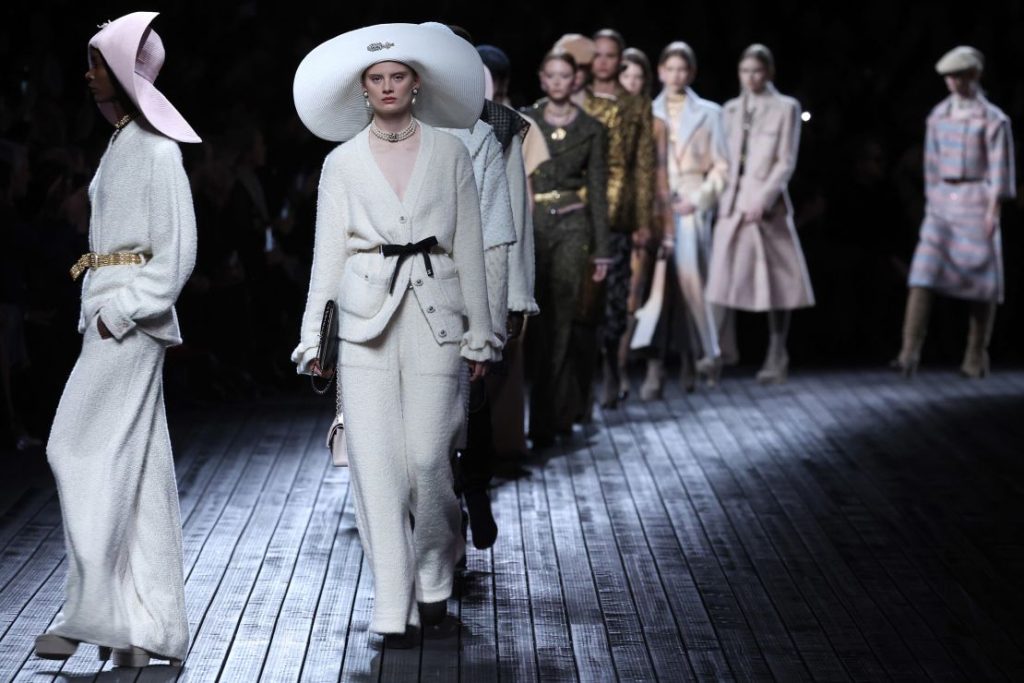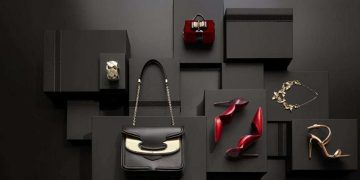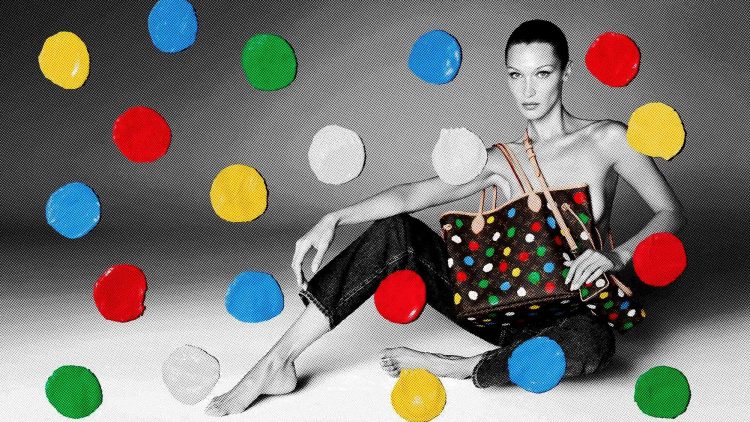Introduction: The Cultural Power of Legacy Luxury Brands Like Chanel, Gucci, and Louis Vuitton
In the world of luxury, certain brands transcend the boundaries of commerce to become symbols of culture, status, and identity. Labels such as Chanel, Gucci, and Louis Vuitton do more than just create fashion—they shape global culture, influence social dynamics, and even alter the course of history. These iconic names have spent decades or even centuries perfecting their craft, ensuring that they remain relevant and coveted by consumers across generations.
The power of these brands lies in their ability to resonate with people on a deeper level. Their creations speak not just to the desire for exclusivity and opulence but to the zeitgeist of an era. Chanel, for example, revolutionized fashion in the early 20th century by liberating women from restrictive clothing and offering them a more elegant and liberated way to dress. Similarly, Louis Vuitton’s craftsmanship in luggage has become synonymous with luxury travel, while Gucci’s daring designs have shaped modern perceptions of Italian glamour.
This article explores how these legacy luxury brands have evolved through time, how they have collaborated with artists and celebrities to define cultural movements, and how they continue to shape the global fashion and lifestyle landscape. We will also look at what the future holds for these cultural powerhouses and their ongoing influence on society.
The Evolution of Iconic Brands: How Brands Stay Relevant While Honoring Their History
One of the most impressive feats of legacy luxury brands is their ability to remain relevant in an ever-changing fashion industry. As the world changes—through social movements, technological advances, and shifts in consumer behavior—brands like Chanel, Gucci, and Louis Vuitton have managed to stay at the forefront of global fashion by constantly evolving while preserving the core values that made them iconic in the first place.
Chanel: Staying True to Timeless Elegance
Since its founding in 1910 by Coco Chanel, the brand has remained synonymous with timeless elegance, revolutionizing fashion with its classic “little black dress,” chic tweed suits, and the introduction of costume jewelry. Under the visionary leadership of Karl Lagerfeld (who helmed the brand from 1983 until his passing in 2019), Chanel not only maintained its traditional craftmanship but also embraced modern influences, combining high fashion with a touch of avant-garde innovation.
The key to Chanel’s enduring success lies in its commitment to quality, craftsmanship, and understated luxury. Even as fashion cycles have changed, Chanel has stayed true to its roots, continually evolving its offerings while retaining the essence of the brand. This delicate balance between tradition and innovation has enabled Chanel to remain an influential force in fashion and culture.

Gucci: A Renaissance of Bold Expression
The Italian fashion house Gucci has undergone a remarkable transformation in the past two decades. Under the creative direction of Alessandro Michele, Gucci has embraced maximalism, blending opulent florals, bold prints, and nostalgic references to create a visually captivating collection. Gucci’s aesthetic evolution—from its roots in leather craftsmanship under founder Guccio Gucci to its current status as a trendsetting powerhouse—illustrates how a brand can remain culturally relevant by embracing new, disruptive ideas while maintaining a sense of heritage.
Gucci’s success has been largely driven by its willingness to take risks and defy expectations. By tapping into the subcultures of streetwear, punk, and gender-fluid fashion, Gucci has emerged as a leader in reshaping how luxury interacts with modern-day culture.
Louis Vuitton: Crafting a Legacy of Travel and Luxury
For Louis Vuitton, staying relevant has meant evolving with the changing tides of luxury travel, technology, and social status. Known for its iconic monogrammed luggage, Louis Vuitton began as a travel brand in the 19th century. Today, the brand has expanded into high fashion, offering ready-to-wear collections and an array of luxury goods. With Virgil Abloh at the helm of Louis Vuitton’s menswear collection, the brand has also embraced street culture, blending classic luxury with streetwear aesthetics to resonate with a younger audience.
What sets Louis Vuitton apart is its commitment to craftsmanship and its ability to balance tradition with modernity. Through collaborations with artists such as Jeff Koons and Takashi Murakami, as well as partnerships with high-profile figures in music and art, Louis Vuitton continues to redefine what it means to be a luxury brand.
Collaborations That Define Culture: How Fashion Houses and Artists, Musicians, and Celebrities Collaborate to Create Cultural Movements
Luxury brands have long understood the power of collaboration to solidify their cultural relevance. In the 21st century, these partnerships have become more dynamic, merging fashion, art, music, and pop culture to create a cultural phenomenon that resonates far beyond the realm of fashion.
Chanel and Pharrell Williams: Redefining Street Luxury
Chanel’s recent collaborations with Pharrell Williams, one of the most influential musicians and fashion icons of the modern era, have bridged the gap between high fashion and streetwear. Pharrell’s collaborations with Chanel introduced a new way of blending luxury with the cultural expression of music and urban style, breaking traditional boundaries within the fashion world. These collaborations weren’t just about fashion—they were statements of culture, with Pharrell’s influence expanding the definition of what luxury could be.
Gucci and Harry Styles: A Modern Fashion Renaissance
The partnership between Harry Styles and Gucci has similarly captured the world’s imagination. As one of the most influential figures in music and culture today, Styles has become the perfect ambassador for Gucci’s gender-fluid aesthetic, often seen wearing Gucci’s eclectic mix of floral prints, suits, and feminine accessories. Their collaborations have turned Styles into a modern fashion icon and solidified Gucci’s position at the intersection of music, gender fluidity, and luxury fashion.
Louis Vuitton and Supreme: A Clash of Streetwear and Luxury
One of the most iconic fashion collaborations of the 21st century was Louis Vuitton’s partnership with Supreme, the popular streetwear brand. This collaboration broke the fashion industry’s conventions by bringing together two very different worlds—luxury and streetwear. Louis Vuitton, with its high-end reputation, embraced the bold, youth-oriented aesthetic of Supreme, and the results were transformative. It not only made waves in the fashion world but also highlighted the merging of luxury with street culture, further cementing Louis Vuitton as a brand that leads in shaping cultural trends.
Branding as a Cultural Tool: Exploring How Luxury Brands Define and Influence Global Trends
Luxury brands have evolved into far more than just companies selling high-end goods; they are cultural tools that shape trends and influence lifestyles. A luxury brand’s value lies not only in the product but in the identity it creates for its consumers. The brand itself becomes a cultural symbol, a way for individuals to express their social standing, tastes, and aspirations.
Louis Vuitton and Chanel have both turned branding into a powerful cultural phenomenon. Louis Vuitton, through its iconic monogram and commitment to craftsmanship, has transformed its products into symbols of status that define a global elite. Similarly, Chanel has created an aura of sophistication that transcends the product, making the brand a symbol of both fashion and personal identity.
Future of Luxury Brands: What’s Next for These Cultural Powerhouses?
As the world continues to change, legacy luxury brands must adapt to the demands of a new generation of consumers. The future of luxury brands will likely be defined by their ability to navigate the growing importance of sustainability, digital innovation, and global accessibility.
In the future, these brands will continue to find new ways to engage with their audiences, whether through artificial intelligence (AI), augmented reality (AR), or NFTs. However, the core principles of craftsmanship, exclusivity, and identity will remain the backbone of their influence, ensuring that these brands continue to shape both the fashion world and broader culture.
Conclusion: The Cultural Weight of Luxury Brands in Shaping Both Fashion and Lifestyle
Luxury brands like Chanel, Gucci, and Louis Vuitton are more than just businesses—they are cultural icons that transcend fashion to shape global trends, social movements, and even the way people see themselves. Their legacy lies not only in the products they create but in the cultural narratives they weave, influencing generations of consumers and fashion lovers.
As these brands continue to evolve and innovate, their role as cultural trailblazers is unlikely to diminish. Their ability to blend heritage with modernity, to collaborate with artists and musicians, and to adapt to a rapidly changing world will ensure that their influence endures for decades to come.
















































